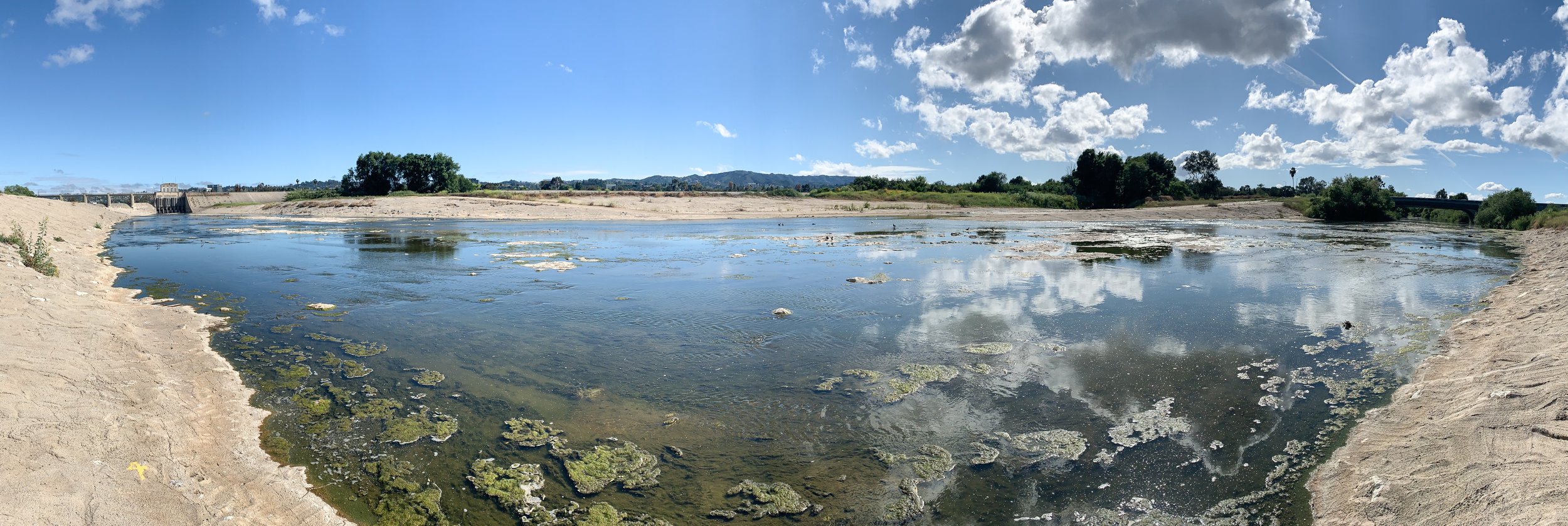Pushing for a Stronger, More Vibrant Basin: Optimism and Opportunities in the Sepulveda Basin Vision Plan
Last month, the City of Los Angeles released a first draft of its Sepulveda Basin Vision Plan, a transformative vision to improve the basin’s ecological function, recreational opportunities, and community access to nature over the coming decades. Covering approximately 2,000 acres, the Sepulveda Basin represents the largest swath of open space in urbanized Los Angeles, comprising golf courses, athletic fields, Lake Balboa, and a wildlife preserve housing various native birds and other species. With over a quarter of the basin’s available land currently under-utilized, the vision plan process offers a significant opportunity to transform the basin from its dull, degraded present state into one where both humans and the ecosystem can truly thrive.
While Los Angeles Waterkeeper is in the process of reviewing the extensive draft Vision Plan, we’re optimistic about its emphasis on restoring natural systems within the basin. The City intends to restore the natural course of the LA River by removing the concrete channel that currently constrains it, enabling the river to flow freely and adapt its path during storm events. The plan also promises to improve the basin’s stormwater capture capabilities, both offering essential flood protection for the surrounding community and laying the groundwork for future stormwater capture projects.
“The Sepulveda Basin Vision Plan embodies strong environmental priorities and has a clear vision of how to implement them. We are optimistic about the revitalization of the basin’s natural areas and the vast improvements to the river’s ecological health.”
While LA Waterkeeper acknowledges the City's dedication to ecological restoration within the basin, we believe there is an opportunity for even greater ambition in prioritizing the area’s holistic ecological health. A previous iteration of the plan considered three potential implementation pathways, all of which aimed to preserve meaningful recreational opportunities while introducing new multi-modal transportation infrastructure, including new bridges, green streets, walking paths, and an extension of the Los Angeles River bike path. The community’s preferred pathway, referred to as 'The Wildlands,' was the most ambitious option in terms of habitat restoration, yet it faced opposition due to concerns about narrowing space available for existing recreation activities. Consequently, the current plan seeks to balance these interests by expanding habitat area as much as possible while preserving existing recreational space in the basin.
LA Waterkeeper remains committed to advocating for a nature-first approach to the Vision Plan. We are actively engaged in the process and intend to submit comments highlighting our concerns and exploring additional opportunities to align the basin’s future with the need to restore the remainder of the LA River’s path through our urban environment.
The City of LA is currently accepting comments on the draft Sepulveda Basin Vision Plan through December 18. If you have any feedback on the plan, we strongly encourage you to submit your comments to the City. Additionally, please don’t hesitate to reach out to us with any questions, insights, or concerns you might have. Your input can play a significant role in shaping the basin's future.

